I like twig stoves for backpacking and, in spite of trying several, I’ve mostly stuck with the same one for years – long enough to be intimately familiar with everything I dislike about my particular twig stove. Along came Simple Theory Gear with a stove, The Pack Stove, that seemed to address every single issue I was having with my tabbed construction, flat pack style stove. I am going to spoil this review right here in the first paragraph… The Pack Stove isn’t perfect but it is as close to it as I have found. It’s really, really good.

Overview
The Pack Stove is a twig stove (or bio stove) with a cylindrical shape. It’s is made from 304 stainless steel that is significantly thicker than the steel found on most twig stoves. In spite of that thicker steel, it still weighs in at 11.8 ounces which is similar or even less than many steel flat pack or hinged stoves.
The design is the real story here. Instead of packing flat, the Pack Stove is designed to nest. It nests on water bottles with a similar diameter to the standard 32 ounce Nalgene. It only has one loose part, the top grate, which can be stowed on the stove itself.
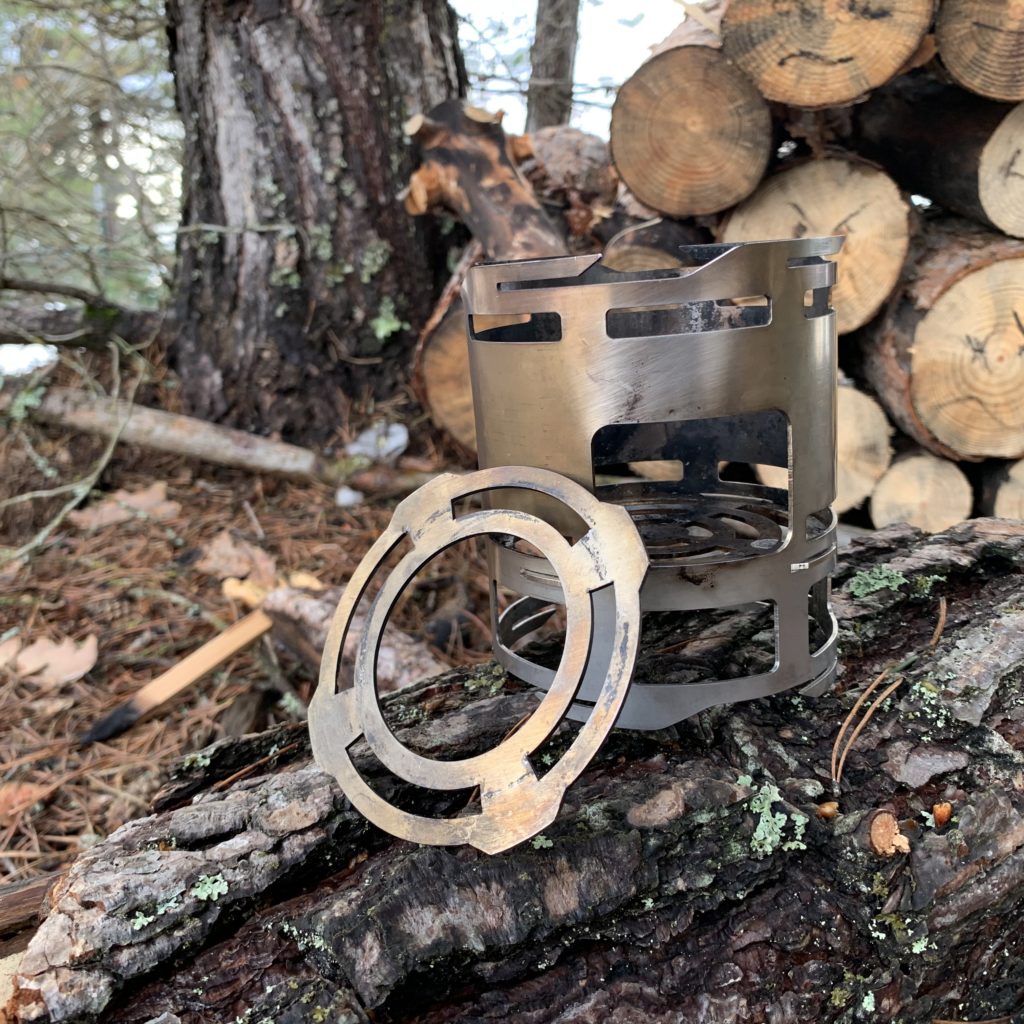
Observations from Use
Background with Twig Stoves – In order to appreciate The Pack Stove, I think you probably need a background with other twig stoves. Most twig stoves on the market are box-shaped and fall into two categories: those that assemble with tabs/slots and those that are hinged.
Both of these types of stoves require assembly in some form. Hinged stoves are easier to work with but are not without their issues thanks to the warping that seems to come standard with any thin metal box that holds a fire. Basically, they all require fiddling, especially when it comes to their grates which are often some sort of cross-member design.
Little to No Fiddle Factor – The fiddle factor for flat-pack style twig stoves is made more annoying by their tendency to warp and the fact that there is no way to disassemble them without leaving your hands looking like you just swept your chimney. Almost any twig stove on the market will work but the fiddle-factor is what is most likely to turn you off.
The Pack Stove does away with almost all fiddle factor. In fact, it is really no more fiddly than something like a canister stove. There are no hinges, tabs, slots, or cross members. You simply take the one-piece grate off the bottom of the stove where it is stowed, attach it to or rest it on the top and start burning. Then, when it is time to put it away, you can quench the entire stove with water or snow without fear of excessive warping and be on your way. The ability to quench the stove without worry is a key feature.
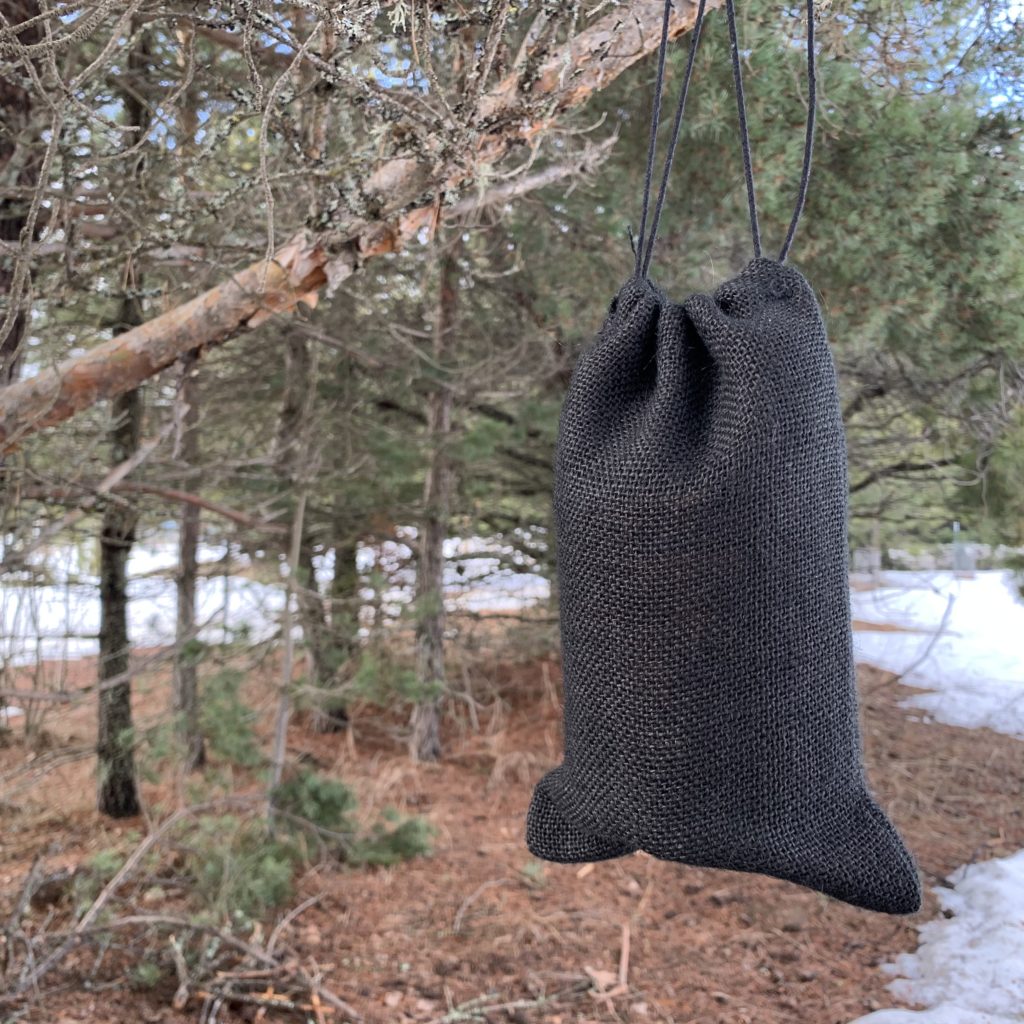
Little to No Warping – Warping is extremely common in most flat pack twig stoves. To be fair, it is mostly an inconvenience that makes assembly/disassembly a pain but not a real deal-breaker. The Pack Stove, however, seems to be HIGHLY resistant to warping thanks to its thicker steel stock and stong cylinder shape. The only parts I have warped even slightly are the grate retainer tabs on the top and these are designed to be easily fixed using the grate itself as a key to space them. The bottom line is that warping, even if quenched with water or in snow, is not an issue.
Strong Burner – All twig stoves are somewhat sensitive to airflow. If you have used one, you’ve noticed the extra smoke that is created when the stove starts to choke a bit. Some stoves will start to choke when the coal/ash bed is too deep. Some start to choke with large diameter pots or pans that cover too much of their upper vents.
The Pack Stove with its numerous side ports, raised and ventilated bottom plate, and an air gap at the top seems to breathe well in all the conditions that I tried. It does especially well at holding a coal bed. It burns remarkably well in spite of the more compact firebox than what I am used to.
Versatility – This stove is versatile. It works well in its intended function, burning twigs, but it is also designed to work well as a windscreen and pot stand for alcohol stoves. To use The Pack Stove with a spirit burner, just turn it upside down and place it over your burner. This shields the burner from wind (though you may need additional shielding on really windy days) and creates nearly perfect head spacing for the jets when used with a Trangia (or similar). This is a nice feature for those who may spend time above treeline or other places where wood can be scarce.
Simple Theory Gear has mentioned the possibility of a titanium version of this stove sometime in the future. If they do manage to bring that to market, I could see people who use alcohol stoves as their primary cooking method carrying The Pack Stove as their pot stand/windscreen just to have the emergency redundancy of being able to use it as a twig stove should they run out of fuel.
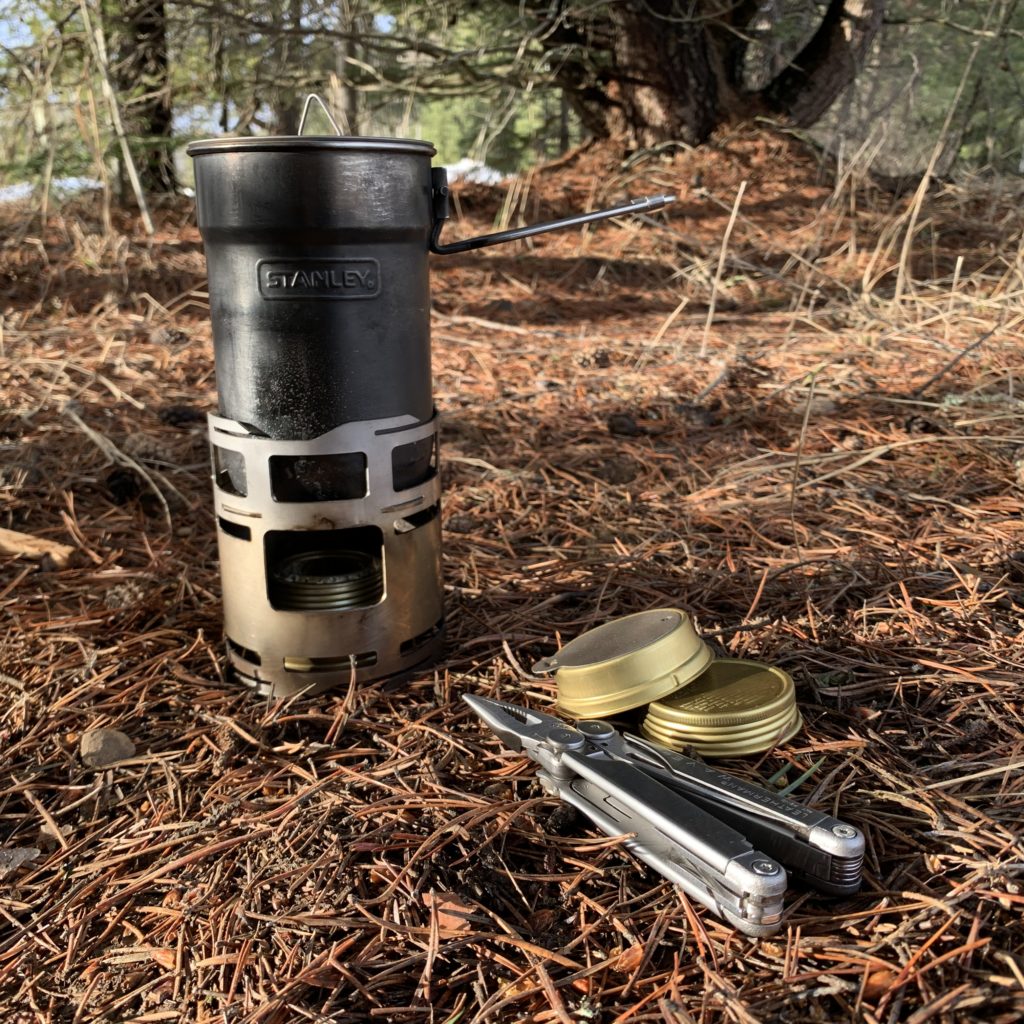
Details – There are a few other details of The Pack Stove that I appreciate. The way the grate stows on the bottom of the stove creates a chamber that can be used to stow fire-starting materials like birch bark for your next burn.
I also appreciate the synergy that this stove has with the Stanley Adventure Camp Cook Set which I have previously reviewed. They can be nested together and the pot is basically the perfect size for use with this stove. The narrow shape seems to be optimized for this stove, allowing for plenty of air to get to the fire and seeming to have all the heat focused directly into it. This is no accident. While The Pack Stove will work with just about any cook pot you can safely balance on it, the designer is also a fan of the Stanley Adventure Camp Cook Set.
I can’t say enough about the nesting aspect of The Pack Stove’s design. Flat pack twig stoves are nice in that they, well… pack flat. However, they still have to be stowed somewhere in your pack. In a sense, The Pack Stove takes up ZERO additional space in your pack because it shares a spot that was already occupied by a water bottle.
Not Quite Perfect – The review has been rightly glowing so far but I don’t want to give the idea that The Pack Stove is perfect. There are some things that I would change about it. For instance, I don’t see why the grate has to be “locked” on the top. This is perhaps the only fiddly part of working with the stove and the locking slots are really the only part of the stove that you might wrap. I would like to see simple indexing depressions that the grate could rest in so it could be lifted off easily but wouldn’t slide around.
I also think the feed port could be larger or at least flared toward the top where is more space between ents to allow for easier feeding and the use of larger wood chunks while the pot is in place. It is very workable now but a little more space to feed and position twigs might be nice.
Finally, given that The Pack Stove nests on a water bottle or the Stanley Adventure Camp Cook Set so well, it would be nice if the included stuff sack was tall enough to accommodate those items in addition to the stove. The included sack is made of burlap and is a bit of a tight fit. I could just leave it at home but I find that it makes a handy place to rest twigs off the snow. Simple Theory Gear does have a new stuff sack that might already address this.
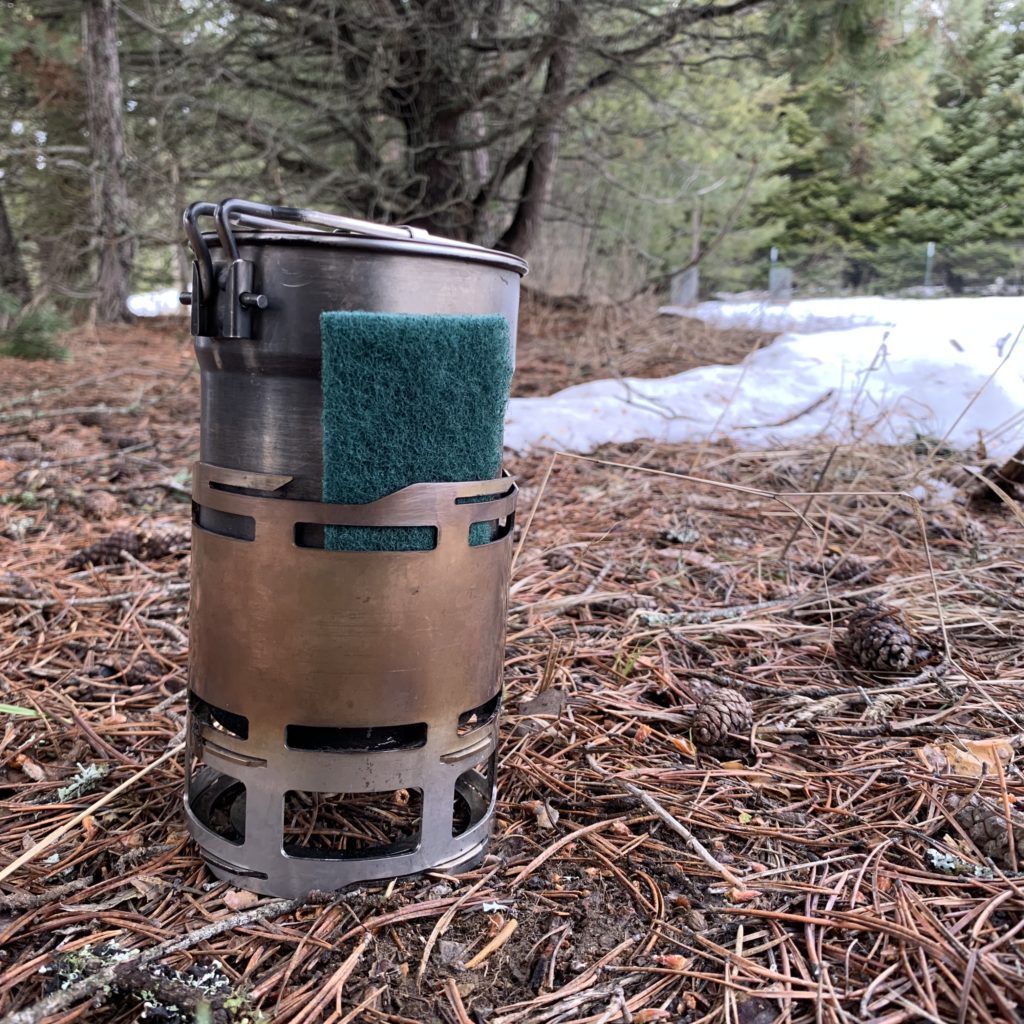
Pro Tips – If you have never used a twig stove, here are some tips that probably hold true for most stoves but work especially well with The Pack Stove. First, carry pliers or some other way of handling hot items – a multitool works fine. It will make your life a lot easier when you need to handle a hot stove.
Second, carry a bit of scouring pad wedged in between the stove and your nested water bottle or pot. It will reduce the rattling a bit and it can be used to clean up your pot, inside and out. It is also handy for cleaning rust off tools like hatchets and knives in cold or wet weather.
Third, fold a few layers of heavy-duty aluminum foil into a square and place your stove on it while you burn. It can help keep the stove level on snow, serve as a catch for ashes and coals, and it will help reflect heat back up into your pot. Foil can also be used to make other handy items like a cup or hot pad in a pinch.
Finally, you can start cooking on these twig stoves pretty much as soon as the fire is going. However, if you want a more maintenance-free, less finicky burn, give the stove a few minutes to build up a coal base before placing your pot on top.
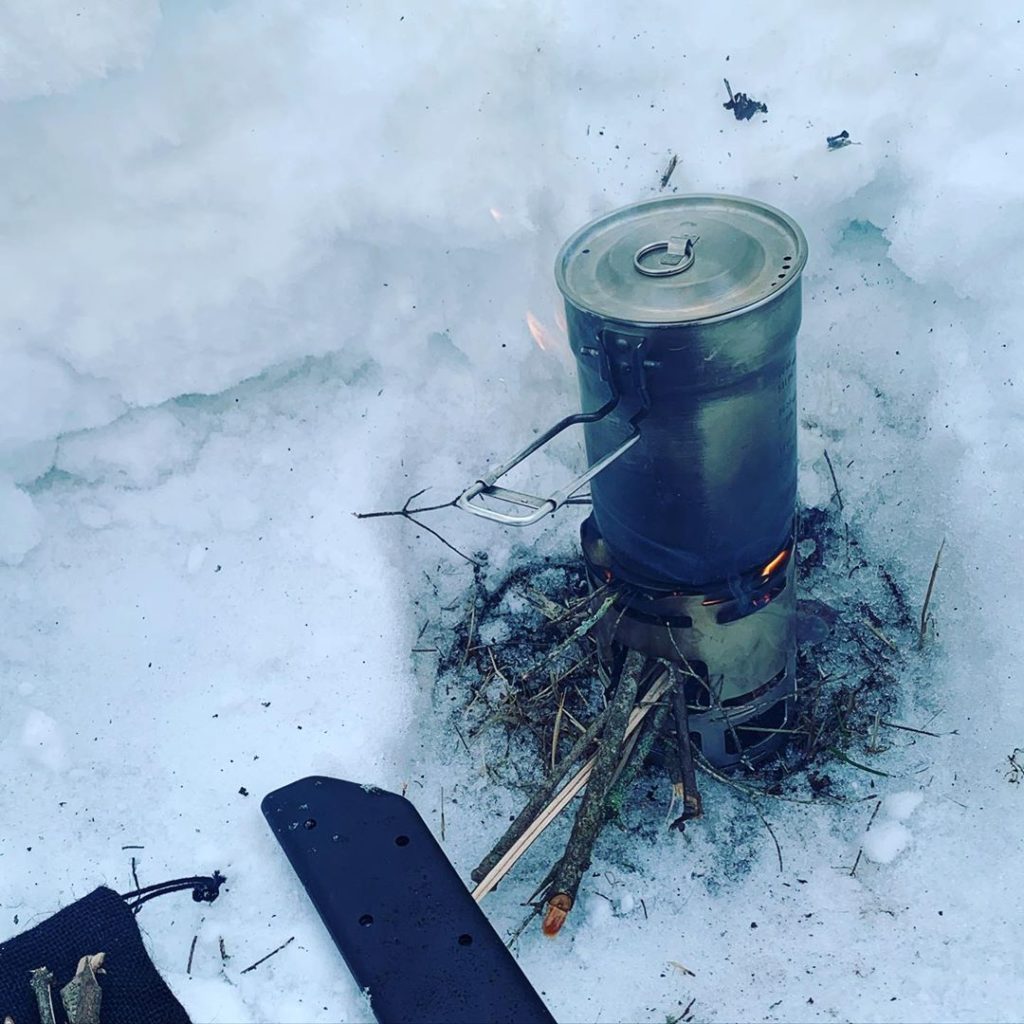
Wrap Up
If you are like me and you already like twig stoves, you probably took one look at The Pack Stove and saw the potential. If you have thought about trying a twig stove, just start here. The bottom line is that it is much easier to live with and use than other stoves. The Pack Stove is one smart twig stove.
Disclosure: The Pack Stove was provided to me by Simple Theory Gear, free of charge, for the purposes of this review.

RE: folded aluminum foil to put th stove on. I’ve added an 8″ square of .093″thick aluminum sheet to the pack for that. More solid nd stable than foil and holds up better for the cost of about 5 ounces, also usable as a signal or shaving mirror.
Great tip Wilbur. Thanks!